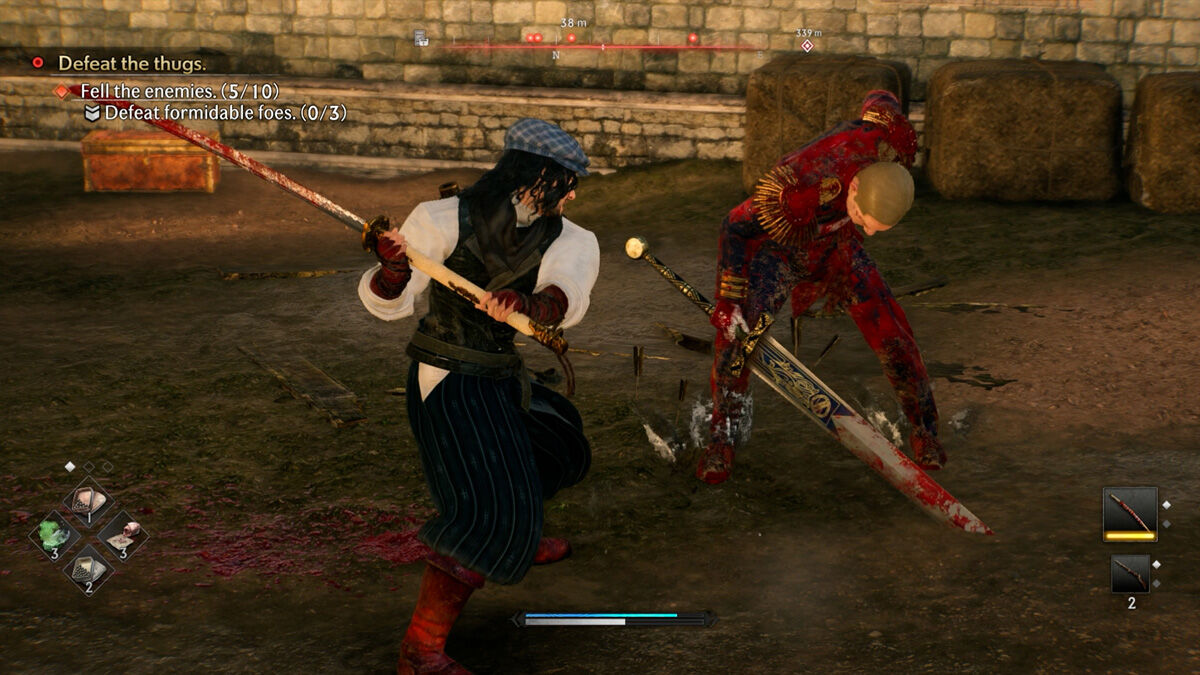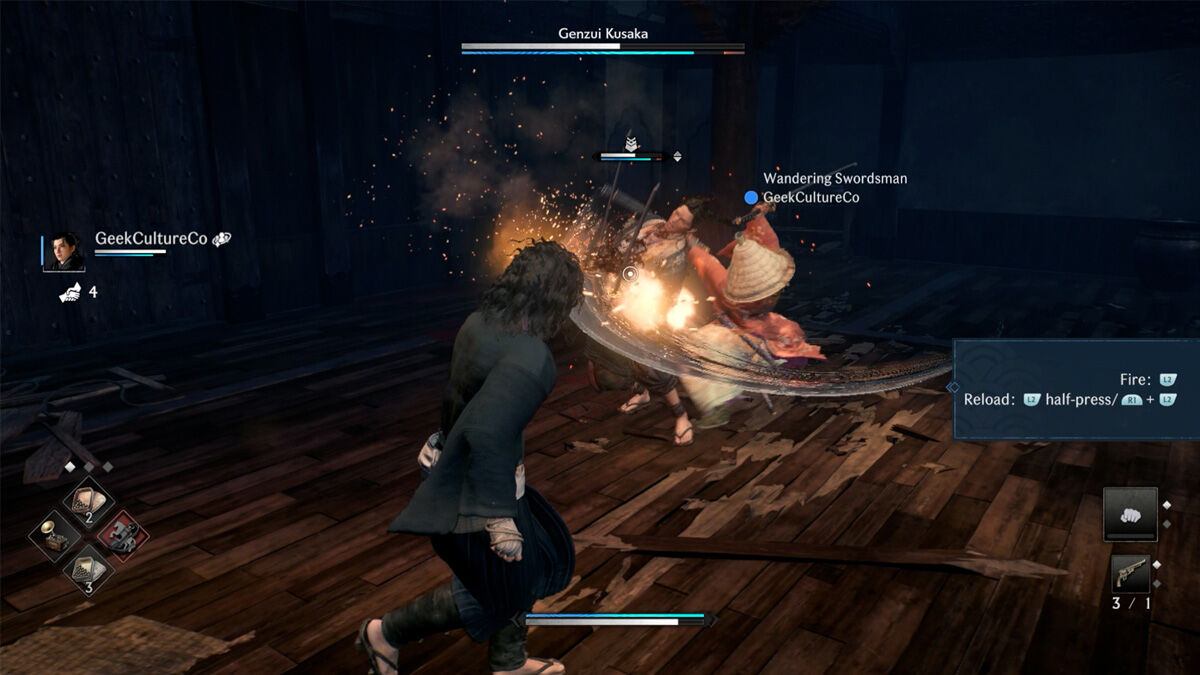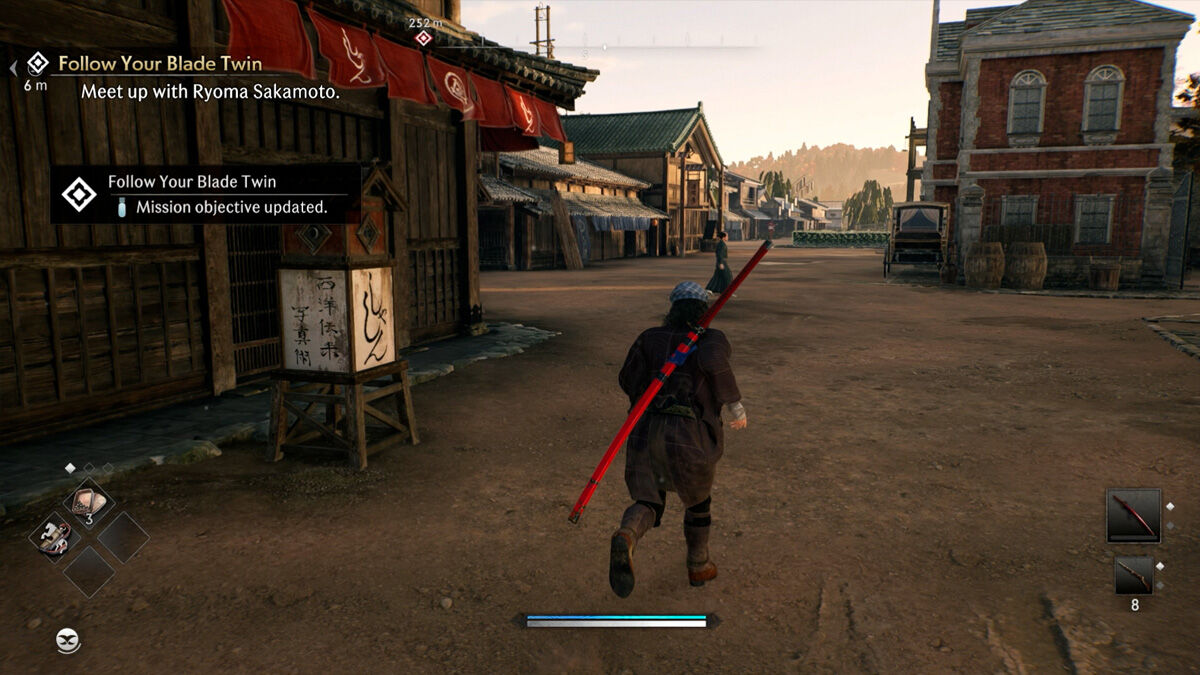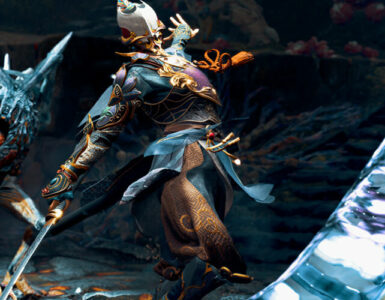The realm of samurai and ninjas set in the fictional chronicles of Japan is one that will never grow old. Ask any gamer about the premise and they will likely laud developers Koei Tecmo and Team Ninja, two studios who have built an empire of games involving masked assassins prowling terraced roofs, and wandering swordsmen wielding cool katanas against bandits and Japanese demons. This time, instead of getting players to fight yokai like in Nioh 2 (2020), gamers will have to deal with the English in their latest outing, Rise of the Ronin.
But while the experience tells a near timeless and interesting tale, its potential is marred by choppy game performance and a repetitive gameplay loop that quickly runs its course.

Rise of the Ronin is set in the late 1850s and early 1860s, in an era known as the “Bakumatsu” of Japan’s Edo period, as the black ships of England moor on Japanese shores and bring along with them cultural revolution. You play as a Ronin (Also known as a “Veiled Edge”), a masterless samurai, on a quest to find your sworn partner, as you are thrown into the thick of political strife between the Tokugawa Shogunate and anti-shogun resistance fighters, currently battling against the unwavering winds of change brought on by Western powers.
The premise sets the game on a compelling course through the missions you take on: Do you build relationships with those in power and maintain public order through mass brutality and an iron fist, or do you side with those against gentrification by adopting methods of assassination and stirring up social unrest? Regardless of the path you choose, the game’s writing is commendable, and your friendships are filled with a cast of eccentric and memorable characters, with the protagonist actively questioning the morality and ethics of both sides, and whether violence is a sensible means to an end to achieve peace.

To build on the suspense, the game also offers players a chance to shape their own role in the annals of history, by giving them the agency to defect to either side. Consequently, your comrades will question your loyalty to their cause and order you to prove your allegiance by carrying out missions that may or may not involve the murdering of key characters in the narrative. Gain enough trust for a particular faction and you will be rewarded with more items and exclusive discounts in pro or anti-shogunate shops, and this premise and freedom to exercise your political agency provides more than enough fuel to see the story through.
Most of the time, though, the missions you undertake are inconsequential to Japan’s political landscape, excluding the key choices you make in the story. In Rise of the Ronin, there will always be nameless expulsionist leaders to kill, objects of intrigue to transport across the map, or corrupt officials to plot against. Alas, the game lays all of its cards on the table too early on, as the signature gameplay loop under publisher PlayStation Studios rears its head, with players embarking in an open world filled with points of interest that gradually reveal themselves on the map. Soon, the entire world becomes a to-do list, and all you are left with is a mental plan to fast-travel to the nearest, most sensible point, just to look for a chest, take photographs, pet a cat, or free a village from bandits. With so many of PlayStation’s first-party games possessing the same – if not similar – gameplay loop, games like Rise of the Ronin suffer as things quickly become formulaic and repetitive.

The gameplay for Rise of the Ronin will benefit if players are given a more meaningful reason for open-world exploration. Less is more in this case – let us know there are 40 cats to pat across Yokohama without revealing their locations and trust we will scour the streets and countryside to find them. In the game’s defence, there are instances where players encounter random distressed individuals and aiding them increases your bond within the districts, leading to more skill and experience points, but these encounters slowly become predictable as players become familiar with the mini-events tied to specific NPCs.
Yet, the game keeps things interesting through character customisation and the freedom to control the tides of combat. There are a million ways to dress up your Veiled Edge and tweak how they look. When it comes to weapon use, players can switch between the katana (Single or Dual), polearm, spear, odachi, English greatsword, and even use their fists. Prolonged use of these weapons during combat and beating certain enemies throughout your journey allows you to learn new stances and moves. Enhancing this experience is a simple level progression and upgrade tree with four aspects (Strength, Dexterity, Charm, and Intelligence) that players can focus on to further express the way they wish to play. Players, then, will find themselves sinking hours into finding different combo combinations after they have built their library of moves with their weapon of choice.

Meanwhile, it’s hard not to compare this combat system with Rise of the Ronin’s counterpart Nioh, which has deeper levels of battle customisation and a wider array of weapons. There is a notable difference in how the combat feels between the two, and although both games focus on getting players to familiarise themselves with enemy attack patterns and perfect parries, Nioh’s combat feels weightier and more dynamic, in contrast to the “floatier” sounding fights in Rise of the Ronin – it wouldn’t hurt to have heavier-sounding blows.
It’s also apparent that Rise of the Ronin needed more time for polish and performance optimisation, with the lack of intelligence in its AI in tow. Some enemies will get stuck behind game objects and are incapable of running around them. There was also an instance where an NPC was stuck rotating on the spot, breaking the game and forcing an entire restart to that moment. Stealth sequences can sometimes be harder too, as some stealth animations become choppy when characters collide with walls or when players stand too close to the ledge executing stealth takedowns, thus forcing their Veiled Edge into battle as they drop in the middle of a crowd post-throw.

The game’s frame rate also requires further refinement because while the options to prioritise graphics, ray-tracing, or frame rate are offered to players, the “Prioritise Graphics” and “Prioritise Ray-Tracing” options cause such a significant dip in frames that the flow of combat and parrying becomes hard to follow. When a game like Rise of Ronin requires players to time parries and read enemy movements fluently, the “Prioritise Frame Rate” option becomes the default way to ensure playability. Thankfully, smoother frame rates and smarter AI are just a few update patches away.
It’s apparent that Rise of the Ronin takes graphical inspiration from another PlayStation Studio title, Ghost of Tsushima (2021), with cutscenes introducing cinematic black bars, its camera capturing as much of the grandiosity of Japan’s landscape while attempting to adopt Kurosawa-like rule-of-thirds cinematography. But while Rise of the Ronin looks beautiful in how it captures the allure of dusk and dawn around the Japanese countryside, it trails Ghost of Tsushima in many ways.

Perceived as a whole, the mountainous Yokohama is serenely beautiful, but when the sum of its parts is viewed individually, the rocks, flowers, and banners hanging by the streets make Rise of the Ronin look like an early PlayStation 4 title. Even the general NPCs in Rise of the Ronin are not as animated as those in Ghost of Tsushima, with lifeless eyes staring through the protagonist as they desperately beg you to save them from imminent shogunate oppression.
The beauty of its landscape is also not consistent throughout the maps. Indeed, the countryside of Japan is filled with serene temples and fields of flowers and reeds, but many parts of the city, on the other hand, lack life. There will be areas where roadside traffic gets noticeably bustling like in Yokohama’s city hall or the brothel district, but most secondary areas feel like they have fallen short of any labour of love given. The grounds of the streets feel flat, with buildings too spaced apart, looking similar, or feeling empty. Once in a while, pedestrians and textures suffer from longer-than-usual pop-ins. Very rarely will the streets of Yokohama be filled with NPC pedestrians that make the district you’re walking through feel lived-in. It almost seems like the game is hesitant to trust in the processing power of the PlayStation 5 by limiting the amount of traffic in the streets. Then again, you may be too busy to notice as you would be spending most of your time running over rooftops, riding on your horse, or gliding over the districts.

Rise of the Ronin has all of the ingredients for a strong Koei Tecmo and Team Ninja title. The game would have left a stronger positive impression if more time had been given to polish its gameplay and performance. If only its greatness was not robbed by PlayStation Studios’ all-to-familiar gameplay loop, Rise of the Ronin would have been a game that stood the test of time. Alas, the winds of change demand games like these to break away from a cookie-cutter formula that appeals to a cookie-cutter audience. Still, it’s worth playing if you like samurais, ninjas, and political shogunate intrigue.
Rise of the Ronin is available on the PlayStation 5.
GEEK REVIEW SCORE
Summary
Even with a compelling historical premise, Rise of the Ronin reveals its cards too early while suffering from poor AI and choppy game performance. Still, there is something to appreciate in its tale if you’re willing to look past its flaws.
Overall
7.8/10-
Gameplay - 7/10
7/10
-
Story - 8.5/10
8.5/10
-
Presentation - 8/10
8/10
-
Value - 7.5/10
7.5/10













